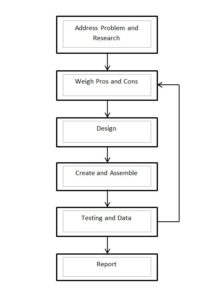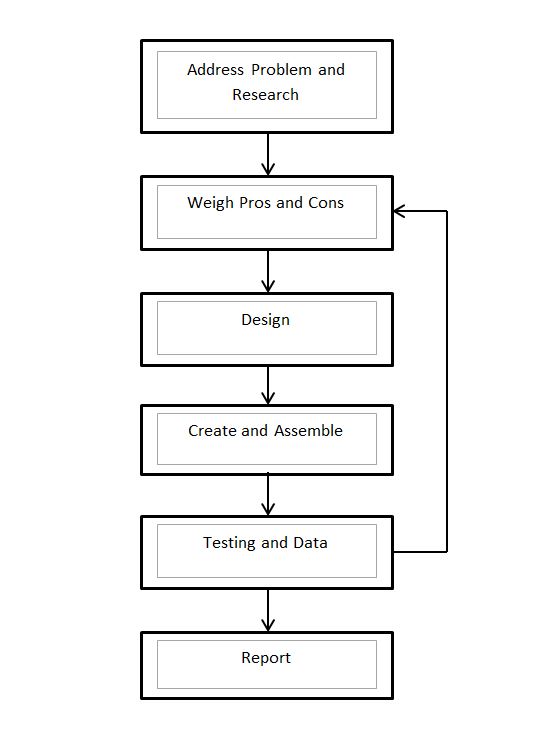
I knew that I wanted to approach the Upcycle design problem with something that achieved both form and function. Following my design loop, I researched sustainable materials that could achieve such a thing. Initially I wanted to build a piece of furniture, however I realized quickly that finding strong upcyclable material such as wood, discarded old tables, etc, could achieve the function I wanted, but would limit me in aesthetics due to the selection available. Weighing the pros and cons, I was steered towards using concrete as the main material; it would retain strength but also could be shaped to an aesthetic of my choosing. During this phase, it was decided that an object smaller in size would be preferable due to the weight of concrete. Entering the design phase, initial drafts focused on creating a bowl or container. Researching how I could achieve this design with concrete led to a major discovery and part of my final design. A bowl could be easily achieved with concrete by soaking a towel in light cement and leaving to dry in the shape desired. Looking at my inventory of upcyclable objects around me, I noticed that this design could be furthered upon by incorporating a light feature. Several drafts later and I am now in the create and assemble phase of my design loop. I have yet to pour the concrete, however I have acquired various kinds of fabrics of different densities and patterns. Currently I am experimenting with different sizes of fabric along with cutting edges to make the shape I want. The next step in assembly will be creating the cement fixture and attaching the light to it. I plan to create several variations in the first go of pouring concrete to provide multiple options for attaching the light and to gather data on the design if I need to cycle back to the pros and cons. If all goes well initially and I achieve the form I want, I will have time to focus even more on the aesthetics of the cement fixture, such as the patterns and color of the fixture.


3 Comments. Leave new
Good descriptive version of your design process. Maybe some pictures of what has been done so far would have helped. The loop really helps to guide your design though so I’m sure the final product turned out great.
It is interesting to see that you have started your design process by looking for a problem and possible solutions. Although I like the idea of incorporating a stage for weighing pros and cons in your initial stages of design process, did this hinder your process in anyway by making you reject some ideas without having a proper go at it? If that’s the case, would you consider changing that cycle in anyway or would you rather stick with it. In my opinion, it is better to fail early in the process so you have enough time to try something new.
I like the idea of doing multiple trials at one time, pouring multiple fixtures at once, picking the best and taking notes of what worked and didn’t seems like an efficient prototyping method. I would recommend doing a couple of prototypes on the more extreme ends of your variations, might was well if you are pouring a bunch. Who knows, they could come out amazing and completely original from the rest. but this is definitely a large undertaking and I hope the trials go well for ya, look forward to seeing the final result!